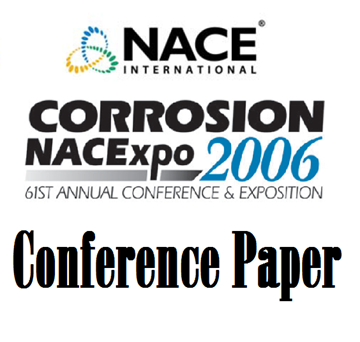Search
10338 Review of Corrosion Issues and Material Solutions inthe CPI
Also Purchased
10341 A Highly Corrosion Resistant and High Strength Alloy for Use in Mineral Processing
Product Number:
51300-10341-SG
ISBN:
10341 2010 CP
Publication Date:
2010
$20.00
06221 ALLOYS SUITABLE FOR PHOSPHORIC ACID APPLICATIONS
Product Number:
51300-06221-SG
ISBN:
06221 2006 CP
Publication Date:
2006
$20.00
07215 Nickel Base Alloys and High Alloyed Stainless Steels for Heat Exchangers and other Applications in Chlorinated Seawater
Product Number:
51300-07215-SG
ISBN:
07215 2007 CP
Publication Date:
2007
$20.00




